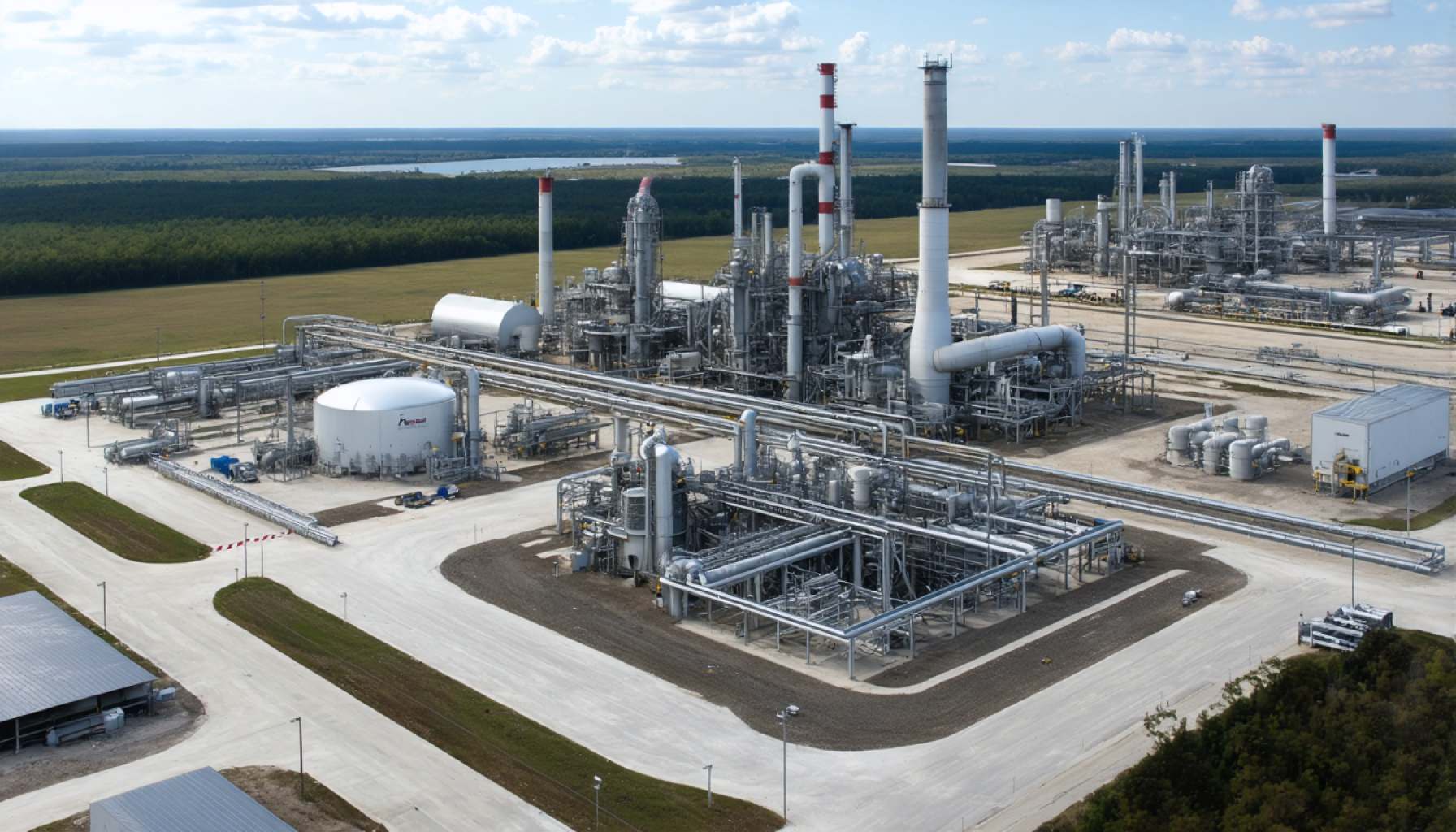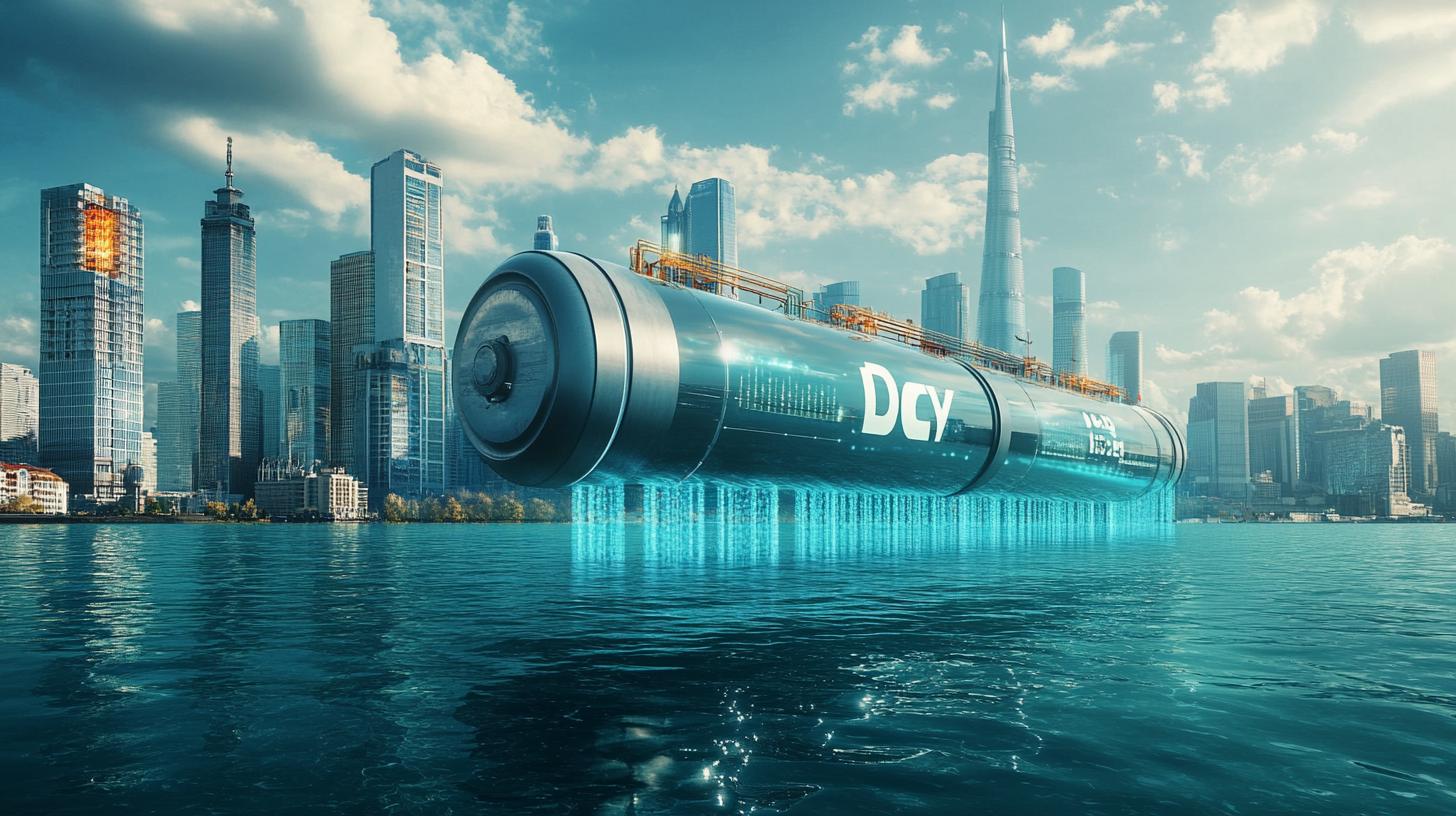- Plug Power is launching a state-of-the-art hydrogen facility in St. Gabriel, Louisiana.
- Partnered with Olin, the plant refines by-product hydrogen from chlorine production.
- The facility will increase Plug’s hydrogen output to 39 tons per day, including a 15-ton-per-day capacity here.
- Achieved over 412,000 accident-free work hours, underscoring project safety and precision.
- Currently in final commissioning, undergoing a dry-out process for high-purity hydrogen.
- Operational continuity planned to support companies like Amazon and Walmart 24/7.
- Represents a significant step in stabilizing the green energy supply chain.
- With a $13 million investment, this initiative is pivotal in shifting global energy paradigms towards sustainability.
Nestled in the heart of St. Gabriel, Louisiana, a monumental project quietly approaches the threshold of its beginnings. Plug Power, a name synonymous with clean energy, gears up to power the world with pure hydrogen. In a cutting-edge facility crafted in partnership with Olin, by-product hydrogen from chlorine production is to be refined into a pristine energy source. This 15-ton-per-day marvel stands on the brink of revolutionizing Plug’s production capabilities, increasing total output to 39 tons per day.
Drenched in safety milestones, the project logs over 412,000 hours without a single accident—a testament to the commitment and unwavering precision behind the build. Now in its final commissioning phase, a meticulous dry-out process hums with purpose, cleansing systems of moisture and impurities, ensuring only the highest purity hydrogen will flow.
Once the plant sparks to life, it will cater non-stop to the demands of industry giants like Amazon and Walmart, running 24/7 with the reliability of seasoned veterans from Plug’s Georgia facility. The effort marks not just a leap in production but a significant stride towards stabilizing the supply chain in the green energy sector.
This $13 million venture reflects a burgeoning shift in global energy paradigms—one where innovation meets the urgent call for sustainability. With its doors about to open, this facility signals more than just an operational triumph. Plug Power stands poised to nurture a future where hydrogen isn’t just a dream, but the norm. As the world watches, what’s being refined in Louisiana might just shape the energy narrative for generations to come.
Powering the Future: How Plug Power’s Hydrogen Plant is Set to Revolutionize Clean Energy
How-To Steps & Life Hacks
To understand the process of transforming by-product hydrogen from chlorine production into high-purity hydrogen, here’s a simplified breakdown:
1. Extraction: By-product hydrogen is generated during chlorine production, primarily by the electrolysis of brine.
2. Purification: Using advanced filtration and drying techniques, the hydrogen is purified by removing moisture and other impurities.
3. Compression and Storage: The purified hydrogen is then compressed and typically stored in high-pressure tanks.
4. Distribution: Finally, the hydrogen is distributed to various consumers, including commercial partners like Amazon and Walmart.
Real-World Use Cases
– Transportation: Fuel cell vehicles (both personal and commercial) are using hydrogen as a cleaner alternative to fossil fuels.
– Industrial Processes: Hydrogen is used in industries for refining, chemical production, and as a reducing agent in metal processing.
– Power Generation: Hydrogen is increasingly utilized in electricity generation, especially for energy storage in combination with renewable sources.
Market Forecasts & Industry Trends
The global hydrogen market is anticipated to reach USD 201 billion by 2025, growing at a CAGR of about 6%. As governments push for greener alternatives, hydrogen’s role is projected to expand rapidly, particularly in Europe and North America.
Reviews & Comparisons
Plug Power is a leader in hydrogen solutions, but competitors like Air Liquide and Linde also present formidable offerings. Reviews often highlight Plug’s focus on integrating hydrogen solutions into logistics and manufacturing.
Controversies & Limitations
While hydrogen is lauded for its clean-burning properties, it is energy-intensive to produce. Critics also point to the challenges in transportation and infrastructure, as hydrogen requires specialized pipelines and storage solutions.
Features, Specs & Pricing
– Facility Capacity: 15 tons per day of hydrogen output.
– Investment: $13 million.
– Technology: Advanced purification and hydrogen extraction systems.
Plug Power’s pricing structure supported by partnerships (e.g., with Amazon and Walmart) often makes it competitive.
Security & Sustainability
The plant’s creation of over 412,000 accident-free hours underscores a commitment to safety. Furthermore, the utilization of by-product hydrogen enhances both the supply chain’s sustainability and the plant’s eco-friendly profile.
Insights & Predictions
Experts predict that the cost of hydrogen production will decrease as technology advances and scale economies grow. Hydrogen is set to become a dominant player in decarbonizing sectors which are hard to electrify, such as heavy industry and long-haul transport.
Pros & Cons Overview
Pros:
– High purity hydrogen production.
– Bolsters the green supply chain.
– Partnerships with major corporations enhance market penetration.
Cons:
– High initial investment cost.
– Infrastructure limitations for widespread hydrogen adoption.
Actionable Recommendations
– For Businesses: Implement hydrogen technology in logistics for sustainable energy solutions.
– For Consumers: Consider adopting hydrogen fuel cell vehicles to reduce carbon footprints.
– For Policy Makers: Incentivize the development of hydrogen infrastructure to accelerate adoption.
For more information about Plug Power, visit their official site: Plug Power.
These insights provide a compelling view into how Plug Power’s innovative endeavors are setting the stage for a more sustainable energy future.













